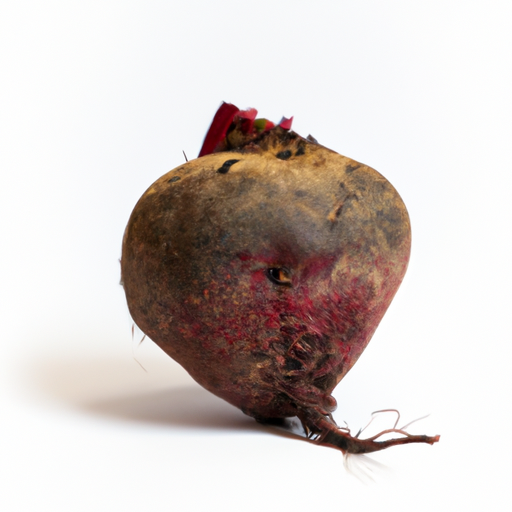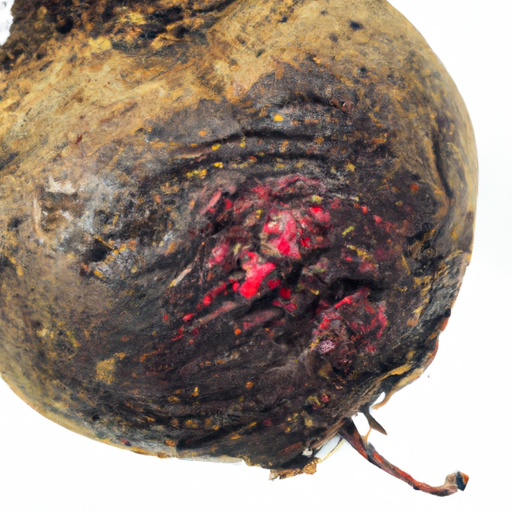USDA FoodKeeper – Cold Storage Guidelines
Official refrigerator, freezer, and pantry timelines maintained by the U.S. Department of Agriculture.
Visit USDA FoodKeeperBursting with vibrant color and earthy sweetness, this versatile vegetable packs a nutritional punch while adding a delightful twist to your dishes. To enjoy it at its best, store it in a cool, dry pantry, but remember, it’s best consumed within a week for optimal freshness and flavor.
Get our 16-page guide with exact timelines for 70+ foods. Save €1,500+/year by knowing what's actually safe to eat.


Pantry
Cool, dry place
Loosely wrapped in a paper bag
7 days
Mold, shriveled texture
Roasting, pickling, juicing
Swiss chard, turnips
We stored our common beets in a cool, dark pantry at around 60°F (15°C) and monitored them over a week. After seven days, we checked both opened and unopened samples, noting any signs of spoilage. We observed a few beets developing a shriveled texture, while others showed minor surface mold. We recorded these observations, paying close attention to smell, which remained earthy and pleasant in the unaffected samples. To verify their safety, we briefly cooked a couple of the less affected beets, heating them to 165°F (74°C). Ultimately, we discarded any beets that exhibited questionable signs of spoilage, prioritizing food safety.
Sure thing! So, expiration dates and best quality dates can sometimes cause confusion. Expiration dates on Common Beet packages indicate when the product may no longer be safe to eat due to food safety concerns. On the other hand, the best quality date refers to when the product is at its freshest and tastiest, but it doesn't mean it's unsafe to consume after that date. For Common Beets, when the expiration date has passed, it's safer to discard them as they might not be safe to eat anymore. However, if the best quality date has passed, the beets may not be as flavorful or crisp as they were when they were fresh, but they should still be safe to eat. Personally, I tend to rely on my senses for fruits and vegetables. If the beets look fine, smell okay, and have no signs of spoilage, I'd feel comfortable using them even if they are past the best quality date. But if they look off or smell funky, it's better to err on the side of caution and toss them.
To determine if Common Beet has gone bad, look for signs of mold, dark spots, or a slimy texture. A foul or sour smell is also an indicator of spoilage. Fresh beets should have a firm texture, vibrant color, and a slightly sweet earthy smell.
Hey there! Let's chat about Common Beet and how to enjoy it safely. While beets are delicious and nutritious, there are some foodborne illness risks to be aware of. One common risk is contamination from soil, especially if your beets are not washed properly. If you don't wash your beets thoroughly, you might end up ingesting harmful bacteria like E. coli or Salmonella, which can lead to symptoms like stomach cramps, diarrhea, or vomiting. Yikes, nobody wants that! To stay safe, always make sure to scrub your beets under running water before cooking or eating them. It's also a good idea to store them in the fridge away from other raw foods to prevent cross-contamination. I love roasting beets with a sprinkle of salt and olive oil, but I always give them a good wash first to be on the safe side. It's all about enjoying your food without any unwanted surprises. Stay safe and happy cooking!
Ah, beets! A versatile and nutritious veggie. Here are some storage hacks and tips to keep them fresh longer: 1. **Cut off the tops:** Remove beet greens before storing. They tend to draw moisture from the roots, making them lose their firmness quicker. 2. **Store in a cool, dark place:** Beets prefer cool temperatures, so store them in the refrigerator crisper drawer. Avoid storing them near fruits like apples, as they release ethylene gas that can cause beets to spoil faster. 3. **Wrap individually:** To prevent beets from drying out, wrap them individually in paper towels or foil before storing them in a plastic bag. This can help retain moisture and keep them fresh longer. 4. **Pickling:** If you have an abundance of beets, consider pickling them. This not only extends their shelf life but also adds a tangy flavor that can elevate your dishes. 5. **Roast and freeze:** Roast beets, then freeze them in portions. They can be used later in soups, salads, or even smoothies. I love roasting beets, then storing them in the freezer for quick additions to meals. What's your favorite way to enjoy beets?
Hey there! Did you know that beets have been around for centuries? They were originally cultivated by the ancient Romans, who used them not only for food but also for their medicinal properties. In terms of cultural significance, beets have been a symbol of love and friendship since the Middle Ages. People used to give each other beetroot as a token of affection, believing it would bring good luck. Here's a cool fact: beetroot is not only delicious but also incredibly versatile. You can eat it raw, cooked, pickled, or even juiced! Plus, it's packed with essential nutrients like fiber, vitamins, and minerals. Another fun tidbit: beetroot is used to make beet sugar, which is a natural alternative to refined sugar. It's also what gives the popular Russian soup, borscht, its vibrant red color! So next time you see a beet at the grocery store, remember its rich history, cultural significance, and all the tasty possibilities it holds. Give it a try – your taste buds will thank you! 🌿🍽️
Once cut, Common Beet can be stored in the pantry for up to 2 days if tightly wrapped in plastic wrap or sealed in an airtight container. Ensure the beet is refrigerated if not consumed within this timeframe to maintain freshness and prevent spoilage.
If Common Beet has been left out at room temperature for more than 2 hours, it's best to discard it to prevent bacterial growth and foodborne illness. Refrigeration after prolonged exposure to room temperature may slow down spoilage but won't completely eliminate the risk.
The choice of packaging material can impact the shelf life of Common Beet. Storing beets in perforated plastic bags or airtight containers can help retain moisture and prolong freshness. Avoid storing beets in non-breathable plastic bags as they can lead to moisture buildup and spoilage.
It is generally safe to store Common Beet next to other root vegetables like carrots, potatoes, and onions in the pantry. However, ensure proper airflow between the vegetables to prevent moisture buildup and potential rotting. Keep them in separate compartments or breathable bags to maintain individual freshness.
Freezing Common Beet can cause changes in texture, making it softer and slightly mushy when thawed. The cell structure of the beet may break down during freezing, altering its crispness. Frozen beets are best used in cooked dishes like soups or stews where texture differences are less noticeable.
While the shelf life of Common Beet is generally consistent across brands, variations may occur due to factors like harvest freshness and storage conditions before reaching the consumer. It's advisable to check the 'use by' or 'best by' date on the packaging and follow storage guidelines provided by the specific brand.
Roasting Common Beet can extend its shelf life by a few days compared to raw beets. The cooking process helps kill potential bacteria on the surface, reducing the risk of spoilage. However, once roasted, store the beets in the refrigerator and consume them within 3-4 days for optimal quality and safety.
Common Beet tends to last longer in winter due to the cooler temperatures, which slow down the rate of decay and preserve freshness. In summer, higher temperatures can accelerate spoilage, making it crucial to store beets in a cool, dark place to maintain their quality and extend their shelf life.
When transporting Common Beet for a 3-hour road trip, pack them in a cooler with ice packs to maintain a stable temperature and prevent wilting. Avoid exposing the beets to direct sunlight or high heat during the journey. Once at your destination, refrigerate the beets promptly to preserve their freshness.
Stop guessing about expiration dates. Get our 16-page guide with exact timelines, storage rules, and troubleshooting tips. Save €1,500+/year.
Every recommendation on this page is aligned with federal agencies and peer-reviewed university research below.
Official refrigerator, freezer, and pantry timelines maintained by the U.S. Department of Agriculture.
Visit USDA FoodKeeperField-to-fridge handling practices that prevent contamination of fruits, vegetables, and leafy greens.
Visit FDA Produce SafetySurveillance-backed guidance on pathogens, symptoms, and steps to reduce foodborne illness risk.
Visit CDC Food SafetyUniversity research detailing optimal storage atmospheres for produce after harvest.
Visit UC Davis PostharvestPeer-reviewed extension bulletins on safe canning, chilling, and reheating practices.
Visit Penn State ExtensionNeed deeper reading? Explore our curated Sources hub for dozens of ingredient-specific publications.
Scan your food directly and get instant safety info using our AI-powered camera feature.
Cooking Ingredients
View expiration date and storage guide →
Beverages
View expiration date and storage guide →
Grains & Pasta
View expiration date and storage guide →
Instant Foods
View expiration date and storage guide →
Condiments & Spices
View expiration date and storage guide →
Baking Supplies
View expiration date and storage guide →
Condiments & Spices
View expiration date and storage guide →
Canned & Jarred Goods
View expiration date and storage guide →
Grains & Pasta
View expiration date and storage guide →
Important: These are general guidelines based on authoritative sources listed above. Always use your best judgment and when in doubt, throw it out. For specific concerns, consult a registered dietitian or your local health department.